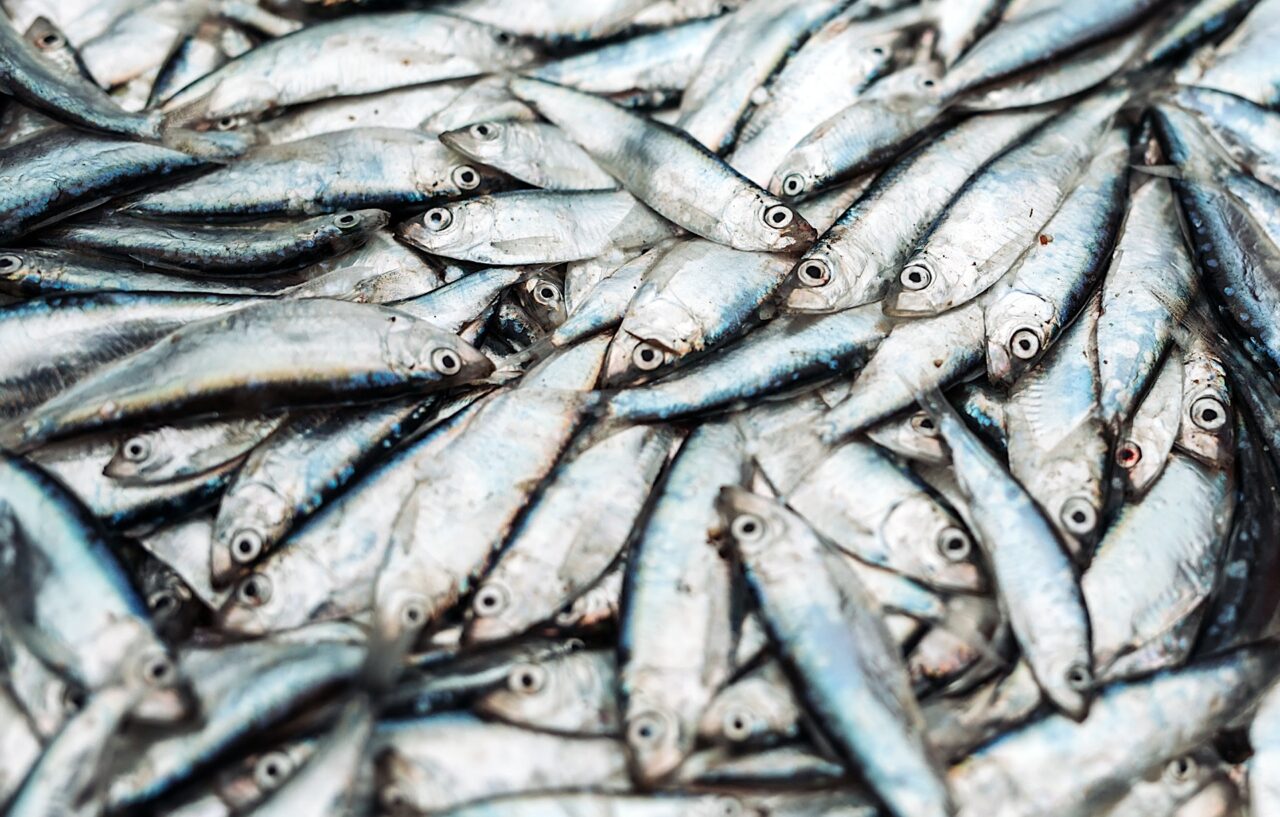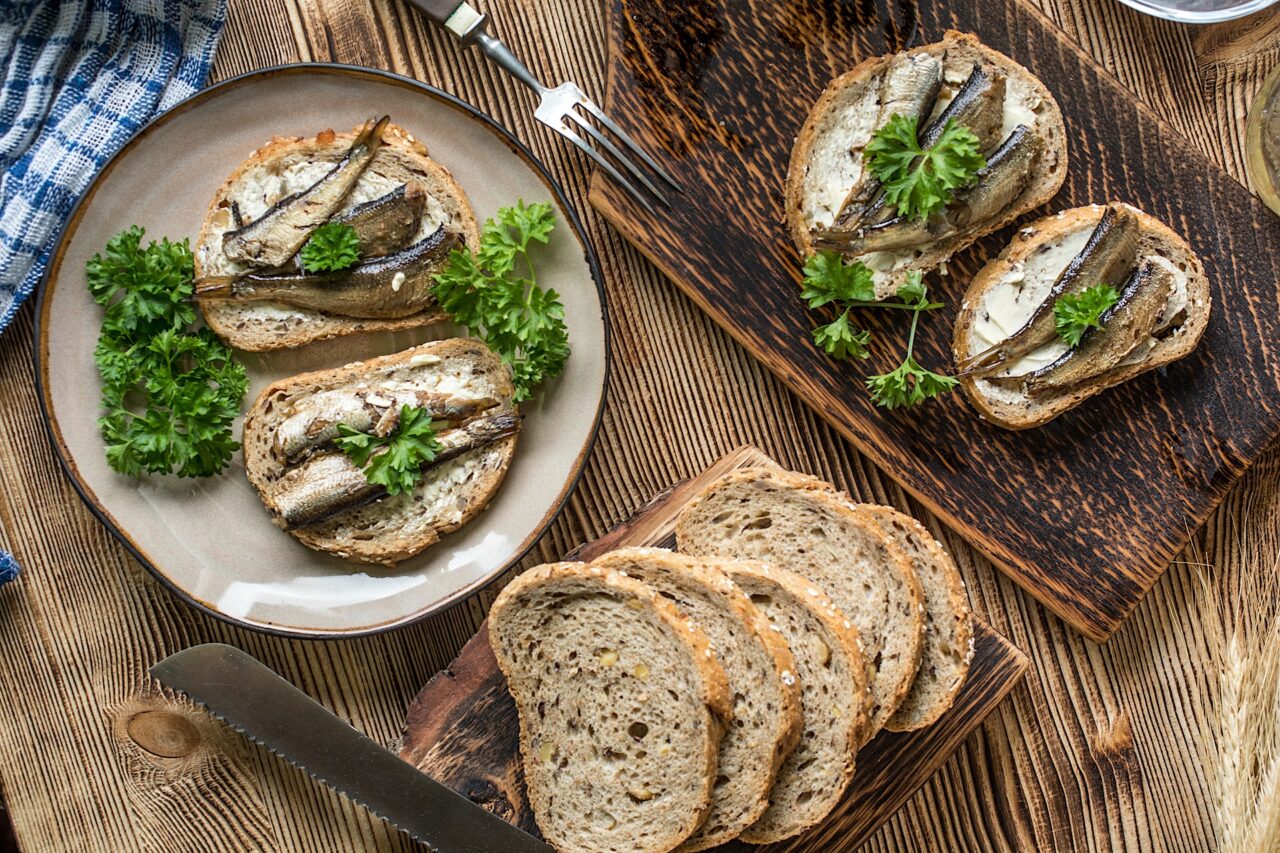Nederlands
English
Deutsch
Français
Sprat is the smallest fish species in the herring family, often referred to as the most undervalued fish species. In this article, we will explain why in detail.
The topics about sprat covered in this article include:
At first glance, a sprat looks just like a herring but is smaller. That is because sprat belong to the herring family. Unlike herring, sprat grow to be a maximum of 17 to 18 centimetres. When fully grown, herring are a minimum of 20 centimetres and can reach a maximum of 40 centimetres.
Would you like to know more about herring? Then read our extensive article about The ‘Hollandse Nieuwe’ and other popular herring products.
Other fish that, like sprat, belong to the herring family are sardines and anchovies, also often confused with sprat. The differences in appearance compared to a sprat are not that big: from larger scales than the herring, smaller gills than the sardine, to a shorter lower jaw than the anchovy. The sprat is a silver-coloured fish with a blue-green back.

Like herring, sprat is found in the North Sea and caught wild all year round. Sprat can also be found in the Northeast Atlantic Ocean and the Baltic Sea.
Unlike herring, sprat gets caught when the water is colder. To catch good herring, we need warmer water. Sprat is therefore preferably caught in the winter months as the schools of sprat tend to swim closer to shore and closer to the water surface.
Although sprat are common along the coast of The Netherlands and Belgium, the amount of sprat caught in these countries has never been very high. The Danish industry catches around 90% of the sprat and uses most of it to produce fish oil and fish meal.
Sprat swim in large schools and often in shallow water. Since they swim close to the surface (especially during the winter months), fishing for sprat does not impact the sea life at the bottom of the ocean, making sprat a sustainable fish. When fishing for sprat, floating trawls, drift nets and purse seines are used.
Sprat often swim together with young herring, so the trawlers regularly catch both. Unfortunately, this bycatch is unavoidable and has a significant impact on sprat fishing. Since 1996, measures have been put into place to limit the bycatch of young herring. Fishing seasons and areas are closed when necessary, and a bycatch quota for young herring has been established and is updated annually.
At least 60% of the sprat catch must actually consist of sprat. The bycatch of young herring gets checked against the herring bycatch quota. The strict rules designed to protect herring often mean that less sprat is caught than is officially allowed.
Sprat is not typically seen as a delicacy like lobster, salmon, eel or, of course, herring. And yet sprat is a delicious fish: fatty, soft and creamy in flavour; when hot-smoked, it can even be compared to eel. However, sprat’s status is nowhere near that of eel or herring, and for that reason, often referred to as the most undervalued fish species.
You can prepare delicious dishes with sprat. Sprat is a good substitute for bacon or smoked sausage in a stew, suitable for a salad and delicious on a pizza or just on some bread.

But which sprat do you need, and how many different types of sprat are there?
Sprat, usually eaten once smoked or processed into preserves, resembles a sardine but is more refined in taste. Sprat are also often sold in jars or cans as Norwegian sardines.
Hot-smoked sprat, known as kieler sprat and a whole cold-smoked sprat, known as ‘chewy’ (in Dutch: taaien) sprat, have some differences. Cold smoking gives the sprat flavour but doesn’t cook it entirely. Hot-smoking cooks and flavours the sprat at the same time. Traditionally, cold-smoked sprat get sold in bundles. Mooijer-Volendam sells hot-smoked kieler sprat, cold-smoked sprat as well as bundles of sprat
Hot-smoked kieler sprat is first soaked in brine for a short time, then smoked briefly at a temperature of about 80 °C. When we speak of sprat being an undervalued fish, we are talking mainly about hot-smoked sprat. The taste is soft and slightly salty, almost like a smoked eel.
Tip! Do you want to eat less meat? Replace bacon or smoked sausage in stews, soups or salads with delicious hot-smoked kieler sprat. That will preserve the smoky flavour, making the meal immediately more unique and healt
Cold-smoked sprat, traditionally available at fishmongers or markets in bundles tied with thin strings, are a lot saltier than hot-smoked sprat. These sprat are smoked longer but at a much lower temperature, around 20 °C. As the sprat is left in a strong brine for much longer, it is much saltier and has a much longer shelf life.
Bundles of sprat are less popular nowadays because filleting a sprat is a complicated job and a skill that not many people possess anymore. Cold-smoked sprat are therefore mainly sold as sprat fillets. These small fillets are really popular and can still be bought in every fishmonger’s shop.
Do you want to buy sprat fillets? Mooijer-Volendam sells filleted sprat in packs of 500 grams.
As a wholesaler, Mooijer-Volendam sets high standards for its quality. Our clients can rely on AAA product quality, something that our clients also demand from us.
That is why more and more customers know how to find us as a catering wholesaler or as a wholesaler for fishmongers, speciality stores and large retailers.
Curious about our sprat products?